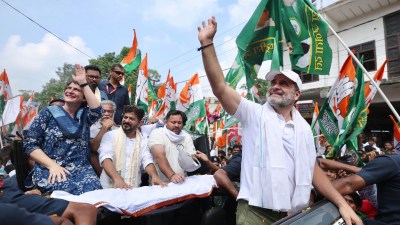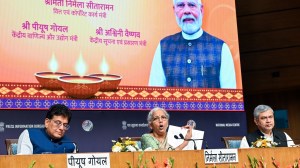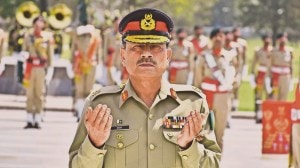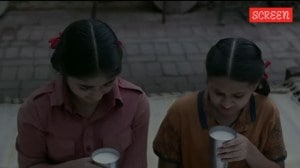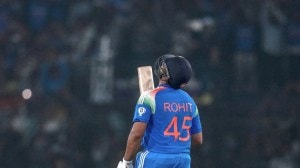Bangladesh @ 50: Admiral Laxminarayan Ramdas and his men played a significant role in the decisive phase of the nation’s Liberation War
Admiral Ramdas was the then commander of INS Beas, which was at the Andamans when the war on India's eastern front broke out on December 3, and which played a crucial role in the blockade of East Pakistan
 Lt Gen Niazi (centre) signing the Instrument of Surrender in the presence of Lt Gen Aurora (left) (Source: Express Archive)
Lt Gen Niazi (centre) signing the Instrument of Surrender in the presence of Lt Gen Aurora (left) (Source: Express Archive)It’s been 50 long years but the events of the 1971 war, in which the Indian Navy played a crucial role, are still fresh in the mind of 88-year-old Admiral Laxminarayan Ramdas (retd). It was in April that he got the first whiff of impending trouble when the Chief of the Naval Staff Admiral SM Nanda told the western fleet to keep its gunpowder dry. “Things were getting very bad in East Pakistan, and with 12 million Bengali refugees crossing the border, India was facing a humanitarian crisis,” says Ramdas, then the commander of INS Beas, a modern gunnery ship of its time.
Western Fleet Commander Rear Admiral Kuruvilla left no doubt about the coming conflict when he declared that nothing short of war would resolve this crisis.
Soon afterwards, INS Brahmaputra and INS Beas were tasked with escorting INS Vikrant, the first aircraft carrier of the Indian Navy, to the Bay of Bengal, and provide it surface and air defence. From then on, they were constantly on the move between Visakhapatnam, Paradip, Andamans and Madras, keeping the enemy guessing about their location, and docking only to refuel.
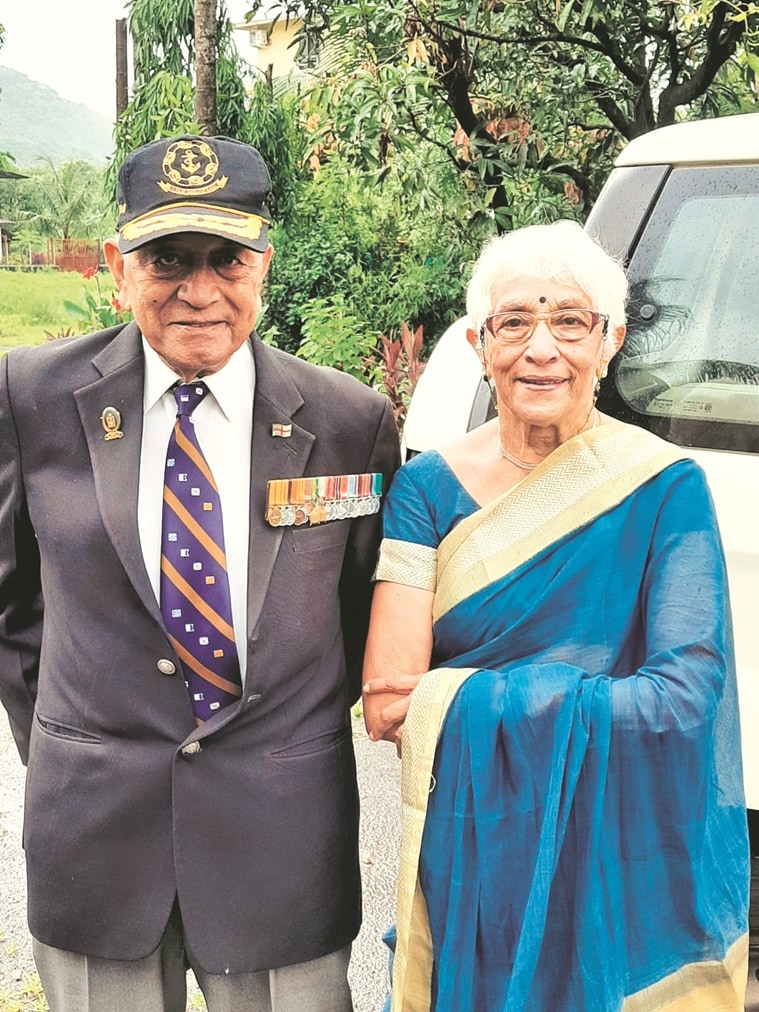 Retd Admiral Laxminarayan Ramdas with wife Lalita in Mumbai (Source: Express Archive)
Retd Admiral Laxminarayan Ramdas with wife Lalita in Mumbai (Source: Express Archive)
There was not a dull moment in this constant hide and seek. Ramdas was flummoxed when INS Beas’s main armament FPS 5 Weapon Control System suddenly stopped functioning during one such sortie. His efforts to get spares from the UK too did not materialise. It was then that his officers had a Eureka moment. “The late SN Singh and Electrical Officer Lt Cmdr RV Singh crafted a solution by rolling up the silver wrapping paper from the Gold Flake cigarette packet to replace the sensor. “To our great joy, this jugaad worked throughout the war and later!”
INS Beas was at the Andamans when the war broke out on December 3. The next day, pilots from INS Vikrant took off for their first air raid and Ramdas ordered his ship to go to “Action Stations”. INS Beas played a crucial role in the blockade of East Pakistan. “Some of the highlights of our action were bombardment and amphibious landings at Cox’s Bazar, interception of gun boats, encounter and boarding of Pakistani vessels masquerading as foreign merchant vessels, and anti-submarine operations,” says Ramdas.
Their bombardment of Cox’s Bazar airport was a major success. Ramdas remembers how, after the war, some sailors who had joined the Mukti Bahini, boarded INS Beas near Chittagong and spoke about the damage.
The sailors were on their toes round the clock. At one point, gunnery officer, the late Lieutenant John D’Silva, saw what he thought was a periscope. INS Beas and INS Kamorta, another vessel, targeted it with their anti-submarine weapons, and kept it down until the INS Vikrant was safe.
It was on Day 9 of the war that INS Beas intercepted Anwar Baksh, a Pakistani merchant ship posing as a foreign vessel. A team of sailors led by Lt Cdr Raj Bajaj was sent to board the vessel and investigate. Ramdas says it was then that a sailor called D Lal thought he saw a person trying to draw a weapon. Lal immediately fired at the person. In doing so, he earned himself the nickname of Danger Lal. Later, the party found several Pakistan soldiers hiding below the deck. They were transported to Calcutta and handed over to the local authorities.
More adventure awaited the intrepid INS Beas when the aircraft carrier, USS Enterprise, and some other units of the US Seventh Fleet started sailing towards the Bay of Bengal to possibly intervene and help evacuate Pakistani troops.
“The mighty (INS) Beas, youngest of the fleet, was ordered to slow down the American fleet,” recounts Ramdas, a smile in his voice. It moved towards USS Enterprise with great stealth. “We were completely radio silent, radar silent but we were listening to everything, we could hear the exchange between the pilots in the sky,” Ramdas relives the excitement. Even though the US fleet was formidable, the 230-odd sailors and 20 officers on INS Beas were in high spirits. Ramdas tells how a Sikh sailor told him, “Sir, we have seen their Patton tanks and Sabre jets in 1965, ab iss Enterprise ko bhi dekh lenge.”
The INS Beas was getting close to the Enterprise when it got the good news. Dhaka was falling, the war was over. Today, Ramdas muses, “It was almost a suicide run.” When the war ended, Ramdas went to Chittagong, negotiating a treacherous minefield on the way.“It was a huge risk we took. Luckily, I am alive to tell the tale.”
The war was over but the adventures continued. Ramdas remembers being stopped by a bunch of five youngsters when he was on his way to a POW camp. “In a mix of Hindi and Bengali, they told me to give them the custody of a Pakistani Major infamous for brutalising women. I refused, I told them we were duty-bound to protect him under the Geneva Convention. I wonder what they think of that day now,” says Ramdas, who was awarded the Vir Chakra for his grit, courage and determination in the war.
Back home in Mumbai’s Colaba, his wife Lalita spent six anxious months without any contact with Ramdas. “There were no mobiles, no phones, no letters. I would visit the wives of sailors every day to reassure them.” Left behind, the women held on to each other. Lalita remembers December 9, when INS Khukri was torpedoed by a Pakistani submarine, sinking 18 officers and 176 sailors on board. “The Engineer officer of INS Khukri, Cdr George Oommen and his wife Cissy, my good friend, lived across the landing from us. I can still remember her grief and devastation and my sharing cigarettes, rum and black coffee through those first agonising days and nights. This was the only way to ensure that she would allow me to stay with her and not take any extreme step,” recounts Lalita.
Fifty years on, Ramdas says he is a man of peace, “Wars don’t solve anything. We should do a better job of neighbourhood management.”



- 01
- 02
- 03
- 04
- 05


